Synthesis of Dihydropyrimidines: Isosteres of Nifedipine and Evaluation of Their Calcium Channel Blocking Efficiency
Abstract
1. Introduction
2. Calcium Channels
3. Calcium Channel Blockers
4. Dihydropyrimidines as Calcium Channel Blockers
5. Synthesis of Dihydropyrimidines
6. Advanced Pathways
6.1. Microwave-Assisted DHPMs Synthesis
6.2. Solvent-Free Synthesis of DHPMs
6.3. Computational Investigations
7. Other Therapeutic Accomplishments of Dihydroyrimidines
8. Conclusions and Future Perspective
Author Contributions
Funding
Institutional Review Board Statement
Informed Consent Statement
Data Availability Statement
Acknowledgments
Conflicts of Interest
References
- Tadic, M.; Saeed, S.; Grassi, G.; Taddei, S.; Mancia, G.; Cuspidi, C. Hypertension and COVID-19: Ongoing controversies. Front. Cardiovasc. Med. 2021, 8, 639222. [Google Scholar] [CrossRef]
- Kjeldsen, S.E. Hypertension and cardiovascular risk: General aspects. Pharmacol. Res. 2018, 129, 95–99. [Google Scholar] [CrossRef]
- Kaur, R.; Chaudhary, S.; Kumar, K.; Gupta, M.K.; Rawal, R.K. Recent synthetic and medicinal perspectives of dihydropyrimidinones: A review. Eur. J. Med. Chem. 2017, 132, 108–134. [Google Scholar] [CrossRef] [PubMed]
- Marinescu, M. Biginelli Reaction Mediated Synthesis of Antimicrobial Pyrimidine Derivatives and Their Therapeutic Properties. Molecules 2021, 26, 6022. [Google Scholar] [CrossRef] [PubMed]
- Bailey, B. Glucagon in β-blocker and calcium channel blocker overdoses: A systematic review. J. Toxicol. Clin. Toxicol. 2003, 41, 595–602. [Google Scholar] [CrossRef]
- Eisenberg, M.J.; Brox, A.; Bestawros, A.N. Calcium channel blockers: An update. Am. J. Med. 2004, 116, 35–43. [Google Scholar] [CrossRef]
- Nassar, A.H.; Aoun, J.; Usta, I.M. Calcium channel blockers for the management of preterm birth: A review. Am. J. Perinatol. 2011, 28, 57–66. [Google Scholar] [CrossRef]
- Kow, C.S.; Ramachandram, D.S.; Hasan, S.S. Clinical outcomes of hypertensive patients with COVID-19 receiving calcium channel blockers: A systematic review and meta-analsysis. Hypertens. Res. 2022, 45, 360–363. [Google Scholar] [CrossRef]
- Kow, C.S.; Ramachandram, D.S.; Hasan, S.S. Use of Calcium Channel Blockers and the Risk of All-cause Mortality and Severe Illness in Patients With COVID-19: A Systematic Review and Meta-analysis. J. Cardiovasc. Pharmacol. 2022, 79, 199–205. [Google Scholar] [CrossRef]
- Den Brok, M.G.; van Dalen, J.W.; Abdulrahman, H.; Larson, E.B.; van Middelaar, T.; van Gool, W.A.; van Charante, E.P.M.; Richard, E. Antihypertensive medication classes and the risk of dementia: A systematic review and network meta-analysis. J. Am. Med. Dir. Assoc. 2021, 22, 1386–1395.e1315. [Google Scholar] [CrossRef] [PubMed]
- Sahney, S. A review of calcium channel antagonists in the treatment of pediatric hypertension. Pediatr. Drugs 2006, 8, 357–373. [Google Scholar] [CrossRef]
- Lin, Y.-C.; Lin, J.-W.; Wu, M.-S.; Chen, K.-C.; Peng, C.-C.; Kang, Y.-N. Effects of calcium channel blockers comparing to angiotensin-converting enzyme inhibitors and angiotensin receptor blockers in patients with hypertension and chronic kidney disease stage 3 to 5 and dialysis: A systematic review and meta-analysis. PLoS ONE 2017, 12, e0188975. [Google Scholar] [CrossRef]
- Bull, J.A.; Mousseau, J.J.; Pelletier, G.; Charette, A.B. Synthesis of pyridine and dihydropyridine derivatives by regio-and stereoselective addition to N-activated pyridines. Chem. Rev. 2012, 112, 2642–2713. [Google Scholar] [CrossRef]
- Gore, R.P.; Rajput, A.P. A review on recent progress in multicomponent reactions of pyrimidine synthesis. Drug Inven. Today 2013, 5, 148–152. [Google Scholar] [CrossRef]
- Ling, Y.; Hao, Z.-Y.; Liang, D.; Zhang, C.-L.; Liu, Y.-F.; Wang, Y. The expanding role of pyridine and dihydropyridine scaffolds in drug design. Drug Des. Devel. Ther. 2021, 15, 4289. [Google Scholar] [CrossRef]
- Borah, B.; Patat, M.; Swain, S.; Chowhan, L.R. Recent Advances and Prospects in the Transition-Metal-Free Synthesis of 1,4-Dihydropyridines. ChemistrySelect 2022, 7, e202202484. [Google Scholar] [CrossRef]
- Betzenhauser, M.; Pitt, G.; Antzelevitch, C. Calcium channel mutations in cardiac arrhythmia syndromes. Curr. Mol. Pharmacol. 2015, 8, 133–142. [Google Scholar] [CrossRef]
- Lam, A.; Karekar, P.; Shah, K.; Hariharan, G.; Fleyshman, M.; Kaur, H.; Singh, H.; Gururaja Rao, S. Drosophila Voltage-Gated Calcium Channel α1-Subunits Regulate Cardiac Function in the Aging Heart. Sci. Rep. 2018, 8, 6910. [Google Scholar] [CrossRef]
- Bers, D.M.; Perez-Reyes, E. Ca channels in cardiac myocytes: Structure and function in Ca influx and intracellular Ca release. Cardiovasc. Res. 1999, 42, 339–360. [Google Scholar] [CrossRef]
- Pachòn Angona, I.; Daniel, S.; Martin, H.; Bonet, A.; Wnorowski, A.; Maj, M.; Jóźwiak, K.; Silva, T.B.; Refouvelet, B.; Borges, F.; et al. Design, Synthesis and Biological Evaluation of New Antioxidant and Neuroprotective Multitarget Directed Ligands Able to Block Calcium Channels. Molecules 2020, 25, 1329. [Google Scholar] [CrossRef]
- Kowalska, M.; Fijałkowski, Ł.; Kubacka, M.; Sałat, K.; Grześk, G.; Nowaczyk, J.; Nowaczyk, A. Antiepileptic Drug Tiagabine Does Not Directly Target Key Cardiac Ion Channels Kv11.1, Nav1.5 and Cav1.2. Molecules 2021, 26, 3522. [Google Scholar] [CrossRef] [PubMed]
- Endo, M. Calcium release from the sarcoplasmic reticulum. Physiol. Rev. 1977, 57, 71–108. [Google Scholar] [CrossRef]
- Kushner, J.; Ferrer, X.; Marx, S.O. Roles and Regulation of Voltage-gated Calcium Channels in Arrhythmias. J. Innov. Card. Rhythm Manag. 2019, 10, 3874. [Google Scholar] [CrossRef]
- Nargeot, J.; Lory, P.; Richard, S. Molecular basis of the diversity of calcium channels in cardiovascular tissues. Eur. Heart J. 1997, 18, 15–26. [Google Scholar] [CrossRef]
- Andrade, F.; Rangel-Sandoval, C.; Rodríguez-Hernández, A.; López-Dyck, E.; Elizalde, A.; Virgen-Ortiz, A.; Bonales-Alatorre, E.; Valencia-Cruz, G.; Sánchez-Pastor, E. Capsaicin Causes Vasorelaxation of Rat Aorta through Blocking of L-type Ca2+ Channels and Activation of CB1 Receptors. Molecules 2020, 25, 3957. [Google Scholar] [CrossRef] [PubMed]
- Wu, J.; Yan, Z.; Li, Z.; Yan, C.; Lu, S.; Dong, M.; Yan, N. Structure of the voltage-gated calcium channel Cav1. 1 complex. Science 2015, 350, aad2395. [Google Scholar] [CrossRef] [PubMed]
- Ono, K.; Iijima, T. Cardiac T-type Ca2+ channels in the heart. J. Mol. Cell. Cardiol. 2010, 48, 65–70. [Google Scholar] [CrossRef] [PubMed]
- Weiss, N.; Zamponi, G.W. T-type calcium channels: From molecule to therapeutic opportunities. Int. J. Biochem. Cell Biol. 2019, 108, 34–39. [Google Scholar] [CrossRef] [PubMed]
- Morrow, J.P.; Marx, S.O. Novel approaches to examine the regulation of voltage-gated calcium channels in the heart. Curr. Mol. Pharmacol. 2015, 8, 61–68. [Google Scholar] [CrossRef] [PubMed]
- Hansen, P.B. Functional importance of T-type voltage-gated calcium channels in the cardiovascular and renal system: News from the world of knockout mice. Am. J. Physiol.-Regul. Integr. Comp. Physiol. 2015, 308, R227–R237. [Google Scholar] [CrossRef]
- Mason, R.; Marche, P.; Hintze, T. Novel vascular biology of third-generation L-type calcium channel antagonists: Ancillary actions of amlodipine. Arterioscler. Thromb. Vasc. Biol. 2003, 23, 2155–2163. [Google Scholar] [CrossRef]
- Triggle, D.; Janis, R. Calcium channel ligands. Annu. Rev. Pharmacol. Toxicol. 1987, 27, 347–369. [Google Scholar] [CrossRef] [PubMed]
- Rovnyak, G.C.; Kimball, S.D.; Beyer, B.; Cucinotta, G.; DiMarco, J.D.; Gougoutas, J.; Hedberg, A.; Malley, M.; McCarthy, J.P. Calcium entry blockers and activators: Conformational and structural determinants of dihydropyrimidine calcium channel modulators. J. Med. Chem. 1995, 38, 119–129. [Google Scholar] [CrossRef] [PubMed]
- Gjörstrup, P.; Hårding, H.; Isaksson, R.; Westerlund, C. The enantiomers of the dihydropyridine derivative H 160/51 show opposite effects of stimulation and inhibition. Eur. J. Pharmacol. 1986, 122, 357–361. [Google Scholar] [CrossRef] [PubMed]
- Bühler, F.R.; Hulthén, U.L.; Kiowski, W.; Müller, F.B.; Bolli, P. The place of the calcium antagonist verapamil in antihypertensive therapy. J. Cardiovasc. Pharmacol. 1982, 4, S350–S357. [Google Scholar]
- Morad, M.; Goldman, Y.; Trentham, D. Rapid photochemical inactivation of Ca2+-antagonists shows that Ca2+ entry directly activates contraction in frog heart. Nature 1983, 304, 635–638. [Google Scholar] [CrossRef]
- Cho, H.; Ueda, M.; Mizuno, A.; Ishihara, T.; Aisaka, K.; Noguchi, T. Synthesis of novel 2-chloro-1, 4-dihydropyridines by chlorination of 2-hydroxy-1, 4-dihydropyridines with phosphorus oxychloride. Chem. Pharm. Bull. 1989, 37, 2117–2121. [Google Scholar] [CrossRef]
- Singh, K.; Arora, D.; Singh, K.; Singh, S. Genesis of dihydropyrimidinonep calcium channel blockers: Recent progress in structure-activity relationships and other effects. Mini Rev. Med. Chem. 2009, 9, 95. [Google Scholar]
- Miledi, R.; Parker, I.; Zhu, P. Extracellular ions and excitation-contraction coupling in frog twitch muscle fibres. J. Physiol. 1984, 351, 687–710. [Google Scholar] [CrossRef] [PubMed]
- Brum, G.; Stefani, E.; Rios, E. Simultaneous measurements of Ca2+ currents and intracellular Ca2+ concentrations in single skeletal muscle fibers of the frog. Can. J. Physiol. Pharmacol. 1987, 65, 681–685. [Google Scholar] [CrossRef]
- Marty, I.; Robert, M.; Villaz, M.; De Jongh, K.; Lai, Y.; Catterall, W.A.; Ronjat, M. Biochemical evidence for a complex involving dihydropyridine receptor and ryanodine receptor in triad junctions of skeletal muscle. Proc. Natl. Acad. Sci. USA 1994, 91, 2270–2274. [Google Scholar] [CrossRef]
- Tanabe, T.; Beam, K.G.; Powell, J.A.; Numa, S. Restoration of excitation—Contraction coupling and slow calcium current in dysgenic muscle by dihydropyridine receptor complementary DNA. Nature 1988, 336, 134–139. [Google Scholar] [CrossRef] [PubMed]
- Tanabe, T.; Beam, K.G.; Adams, B.A.; Niidome, T.; Numa, S. Regions of the skeletal muscle dihydropyridine receptor critical for excitation–contraction coupling. Nature 1990, 346, 567–569. [Google Scholar] [CrossRef]
- Fabiato, A. Calcium-induced release of calcium from the cardiac sarcoplasmic reticulum. Am. J. Physiol.-Cell Physiol. 1983, 245, C1–C14. [Google Scholar] [CrossRef] [PubMed]
- Suda, N.; Penner, R. Membrane repolarization stops caffeine-induced Ca2+ release in skeletal muscle cells. Proc. Natl. Acad. Sci. USA 1994, 91, 5725–5729. [Google Scholar] [CrossRef]
- Howlett, S.E.; Ferrier, G.R. The voltage-sensitive release mechanism: A new trigger for cardiac contraction. Can. J. Physiol. Pharmacol. 1997, 75, 1044–1057. [Google Scholar] [CrossRef] [PubMed]
- Chavis, P.; Fagni, L.; Lansman, J.; Bockaert, J. Functional coupling between ryanodine receptors and L-type calcium channels in neurons. Nature 1996, 382, 719–722. [Google Scholar] [CrossRef] [PubMed]
- Atwal, K.; O’reilly, B.; Gougoutas, J.; Malley, M. Synthesis of substituted 1, 2, 3, 4-tetrahydro-6-methyl-2-thioxo-5-pyrimidinecarboxylic acid esters. Heterocycles 1987, 26, 1189–1192. [Google Scholar] [CrossRef]
- Mishina, T.; Tsuda, N.; Inui, A.; Miura, Y. Jpn. Kokai Tokkyo Koho (1987) JP 62169793. Chem. Abstr. 1988, 108, 56120e. [Google Scholar]
- Atwal, K.S.; Rovnyak, G.C.; Schwartz, J.; Moreland, S.; Hedberg, A.; Gougoutas, J.Z.; Malley, M.F.; Floyd, D.M. Dihydropyrimidine calcium channel blockers: 2-heterosubstituted 4-aryl-1, 4-dihydro-6-methyl-5-pyrimidinecarboxylic acid esters as potent mimics of dihydropyridines. J. Med. Chem. 1990, 33, 1510–1515. [Google Scholar] [CrossRef] [PubMed]
- Rovnyak, G.C.; Atwal, K.S.; Hedberg, A.; Kimball, S.D.; Moreland, S.; Gougoutas, J.Z.; O’Reilly, B.C.; Schwartz, J.; Malley, M.F. Dihydropyrimidine calcium channel blockers. 4. Basic 3-substituted-4-aryl-1, 4-dihydropyrimidine-5-carboxylic acid esters. Potent antihypertensive agents. J. Med. Chem. 1992, 35, 3254–3263. [Google Scholar] [CrossRef]
- Mahgoub, S.; Kotb El-Sayed, M.-I.; El-Shehry, M.F.; Mohamed Awad, S.; Mansour, Y.E.; Fatahala, S.S. Synthesis of novel calcium channel blockers with ACE2 inhibition and dual antihypertensive/anti-inflammatory effects: A possible therapeutic tool for COVID-19. Bioorg. Chem. 2021, 116, 105272. [Google Scholar] [CrossRef]
- Irshad, N.; Khan, A.-u.; Alamgeer; Khan, S.-U.-D.; Iqbal, M.S. Antihypertensive potential of selected pyrimidine derivatives: Explanation of underlying mechanistic pathways. Biomed. Pharmacother. 2021, 139, 111567. [Google Scholar] [CrossRef]
- Nagarajaiah, H.; Mukhopadhyay, A.; Moorthy, J.N. Biginelli reaction: An overview. Tetrahedron Lett. 2016, 57, 5135–5149. [Google Scholar] [CrossRef]
- Takenaka, T.; Usuda, S.; Nomura, T.; Maeno, H.; Sado, T. Vasodilator profile of a new 1, 4-dihydropyridine derivative, 2, 6-dimethyl-4-(3-nitrophenyl)-1, 4-dihydropyridine-3, 5-dicarboxylic acid 3-[2-(N-benzyl-N-methylamino)]-ethyl ester 5-methyl ester hydrochloride (YC-93). Arzneimittelforschung 1976, 26, 2172–2178. [Google Scholar]
- Arrowsmith, J.E.; Campbell, S.F.; Cross, P.E.; Stubbs, J.K.; Burges, R.A.; Gardiner, D.G.; Blackburn, K.J. Long-acting dihydropyridine calcium antagonists. 1. 2-Alkoxymethyl derivatives incorporating basic substituents. J. Med. Chem. 1986, 29, 1696–1702. [Google Scholar] [CrossRef] [PubMed]
- Leonardi, A.; Motta, G.; Pennini, R.; Testa, R.; Sironi, G.; Catto, A.; Cerri, A.; Zappa, M.; Bianchi, G.; Nardi, D. Asymmetric N-(3, 3-diphenylpropyl) aminoalkyl esters of 4-aryl-2, 6-dimethyl-1, 4-dihydropyridine-3, 5-dicarboxylic acids with antihypertensive activity. Eur. J. Med. Chem. 1998, 33, 399–420. [Google Scholar] [CrossRef]
- Meguro, K.; Aizawa, M.; Sohda, T.; Kawamatsu, Y.; Nagaoka, A. New 1, 4-dihydropyridine derivatives with potent and long-lasting hypotensive effect. Chem. Pharm. Bull. 1985, 33, 3787–3797. [Google Scholar] [CrossRef] [PubMed]
- El-Wakil, M.H.; Teleb, M.; Abu-Serie, M.M.; Huang, S.; Zamponi, G.W.; Fahmy, H. Structural optimization, synthesis and in vitro synergistic anticancer activities of combinations of new N3-substituted dihydropyrimidine calcium channel blockers with cisplatin and etoposide. Bioorg. Chem. 2021, 115, 105262. [Google Scholar] [CrossRef] [PubMed]
- Teleb, M.; Rizk, O.H.; Zhang, F.-X.; Fronczek, F.R.; Zamponi, G.W.; Fahmy, H. Synthesis of some new C2 substituted dihydropyrimidines and their electrophysiological evaluation as L-/T-type calcium channel blockers. Bioorg. Chem. 2019, 88, 102915. [Google Scholar] [CrossRef]
- Gordeev, M.F.; Patel, D.V.; England, B.P.; Jonnalagadda, S.; Combs, J.D.; Gordon, E.M. Combinatorial synthesis and screening of a chemical library of 1, 4-dihydropyridine calcium channel blockers. Bioorg. Med. Chem. 1998, 6, 883–889. [Google Scholar] [CrossRef]
- Goldmann, S.; Stoltefuss, J. 1, 4-dihydropyridines: Effects of chirality and conformation on the calcium antagonist and calcium agonist activities. Angew. Chem. Int. Ed. Engl. 1991, 30, 1559–1578. [Google Scholar] [CrossRef]
- Ioan, P.; Carosati, E.; Micucci, M.; Cruciani, G. Broccatelli. F.; Zhorov, B.S.; Chiarini, A.; Budriesi, R. 1, 4-Dihydropyridine scaffold in medicinal chemistry, the story so far and perspectives (part 1): Action in ion channels and GPCRs. Curr. Med. Chem 2011, 18, 4901–4922. [Google Scholar] [CrossRef] [PubMed]
- Teleb, M.; Rizk, O.H.; Zhang, F.-X.; Fronczek, F.R.; Zamponi, G.W.; Fahmy, H. Design, synthesis and pharmacological evaluation of some substituted dihydropyrimidines with L-/T-type calcium channel blocking activities. Bioorg. Chem. 2019, 83, 354–366. [Google Scholar] [CrossRef] [PubMed]
- Teleb, M.; Zhang, F.-X.; Huang, J.; Gadotti, V.M.; Farghaly, A.M.; AboulWafa, O.M.; Zamponi, G.W.; Fahmy, H. Synthesis and biological evaluation of novel N3-substituted dihydropyrimidine derivatives as T-type calcium channel blockers and their efficacy as analgesics in mouse models of inflammatory pain. Bioorg. Med. Chem. 2017, 25, 1926–1938. [Google Scholar] [CrossRef] [PubMed]
- Farghaly, A.M.; Rizk, O.H.; Darwish, I.; Hamza, M.; Altowyan, M.S.; Barakat, A.; Teleb, M. Design, Synthesis, Pharmacodynamic and In Silico Pharmacokinetic Evaluation of Some Novel Biginelli-Derived Pyrimidines and Fused Pyrimidines as Calcium Channel Blockers. Molecules 2022, 27, 2240. [Google Scholar] [CrossRef] [PubMed]
- Teleb, M.; Zhang, F.-X.; Farghaly, A.M.; Wafa, O.M.A.; Fronczek, F.R.; Zamponi, G.W.; Fahmy, H. Synthesis of new N3-substituted dihydropyrimidine derivatives as L-/T-type calcium channel blockers. Eur. J. Med. Chem. 2017, 134, 52–61. [Google Scholar] [CrossRef]
- Kappe, C.O.; Stadler, A.; Dallinger, D. Microwaves in Organic and Medicinal Chemistry; John Wiley & Sons: Hoboken, NJ, USA, 2012; Volume 52. [Google Scholar]
- Kappe, C.O.; Dallinger, D. Controlled microwave heating in modern organic synthesis: Highlights from the 2004–2008 literature. Mol. Divers. 2009, 13, 71–193. [Google Scholar]
- De la Hoz, A.; Diaz-Ortiz, A.; Moreno, A. Microwaves in organic synthesis. Thermal and non-thermal microwave effects. Chem. Soc. Rev. 2005, 34, 164–178. [Google Scholar] [CrossRef]
- Lidstrom, P.; Westman, J.; Lewis, A. Enhancement of combinatorial chemistry by microwave-assisted organic synthesis. Comb. Chem. High Throughput Screen. 2002, 5, 441–458. [Google Scholar] [CrossRef]
- Wilson, N.S.; Sarko, C.R.; Roth, G.P. Development and applications of a practical continuous flow microwave cell. Org. Process Res. Dev. 2004, 8, 535–538. [Google Scholar] [CrossRef]
- Kappe, C.O.; Dallinger, D. The impact of microwave synthesis on drug discovery. Nat. Rev. Drug Discov. 2006, 5, 51–63. [Google Scholar] [CrossRef]
- Wathey, B.; Tierney, J.; Lidström, P.; Westman, J. The impact of microwave-assisted organic chemistry on drug discovery. Drug Discov. Today 2002, 7, 373–380. [Google Scholar] [CrossRef] [PubMed]
- Stadler, A.; Kappe, C.O. Automated library generation using sequential microwave-assisted chemistry. Application toward the Biginelli multicomponent condensation. J. Comb. Chem. 2001, 3, 624–630. [Google Scholar] [CrossRef]
- Kappe, C.O.; Stadler, A. Building dihydropyrimidine libraries via microwave-assisted Biginelli multicomponent reactions. Methods Enzymol. 2003, 369, 197–223. [Google Scholar]
- Desai, B.; Dallinger, D.; Kappe, C.O. Microwave-assisted solution phase synthesis of dihydropyrimidine C5 amides and esters. Tetrahedron 2006, 62, 4651–4664. [Google Scholar] [CrossRef]
- Kappe, C.O.; Kumar, D.; Varma, R.S. Microwave-assisted high-speed parallel synthesis of 4-aryl-3, 4-dihydropyrimidin-2 (1H)-ones using a solventless Biginelli condensation protocol. Synthesis 1999, 1999, 1799–1803. [Google Scholar] [CrossRef]
- Matloobi, M.; Kappe, C.O. Microwave-assisted solution-and solid-phase synthesis of 2-amino-4-arylpyrimidine derivatives. J. Comb. Chem. 2007, 9, 275–284. [Google Scholar] [CrossRef]
- Watanabe, M.; Koike, H.; Ishiba, T.; Okada, T.; Seo, S.; Hirai, K. Synthesis and biological activity of methane sulfonyl pyrrole-substituted 3.5-dihydroxy-6 heptanoates: A novel series of HMG-CoA reductase inhibitors. Bioorg. Med. Chem. 1997, 5, 437–444. [Google Scholar] [CrossRef]
- Kappe, C.O. 100 years of the Biginelli dihydropyrimidine synthesis. Tetrahedron 1993, 49, 6937–6963. [Google Scholar] [CrossRef]
- Dallinger, D.; Gorobets, N.Y.; Kappe, C.O. Microwave-assisted scavenging of electrophiles utilizing polymer-supported sequestration reagents. Application to the synthesis of N3-acylated dihydropyrimidine libraries. Mol. Divers. 2003, 7, 229–245. [Google Scholar] [CrossRef] [PubMed]
- Dallinger, D.; Gorobets, N.Y.; Kappe, C.O. High-Throughput Synthesis of N 3-Acylated Dihydropyrimidines Combining Microwave-Assisted Synthesis and Scavenging Techniques. Org. Lett. 2003, 5, 1205–1208. [Google Scholar] [CrossRef] [PubMed]
- Pisani, L.; Prokopcová, H.; Kremsner, J.M.; Kappe, C.O. 5-Aroyl-3,4-dihydropyrimidin-2-one Library Generation via Automated Sequential and Parallel Microwave-assisted Synthesis Techniques. J. Comb. Chem. 2007, 9, 415–421. [Google Scholar] [CrossRef] [PubMed]
- Loupy, A.; Petit, A.; Hamelin, J.; Texier-Boullet, F.; Jacquault, P.; Mathe, D. New solvent-free organic synthesis using focused microwaves. Synthesis 1998, 1998, 1213–1234. [Google Scholar] [CrossRef]
- Christoffers, J. Iron (III) catalysis of the Michael reaction of 1, 3-dicarbonyl compounds and enones. Chem. Commun. 1997, 10, 943–944. [Google Scholar] [CrossRef]
- Mirza-Aghayan, M.; Bolourtchian, M.; Hosseini, M. Microwave-assisted efficient synthesis of dihydropyrimidines in solvent-free condition. Synth. Commun. 2004, 34, 3335–3341. [Google Scholar] [CrossRef]
- Heravi, M.M.; Aghayan, M.M. Microwave-assisted oxidation of alcohols using wet alumina supported ammonium chlorochromate in solventless system. Zeitschrift für Naturforschung B 1999, 54, 815–817. [Google Scholar] [CrossRef]
- Stefani, H.A.; Gatti, P.M. 3, 4-Dihydropyrimidin-2 (1H)-ones: Fast synthesis under microwave irradiation in solvent free conditions. Synth. Commun. 2000, 30, 2165–2173. [Google Scholar] [CrossRef]
- Hu, E.H.; Sidler, D.R.; Dolling, U.-H. Unprecedented catalytic three component one-pot condensation reaction: An efficient synthesis of 5-alkoxycarbonyl-4-aryl-3, 4-dihydropyrimidin-2 (1H)-ones. J. Org. Chem. 1998, 63, 3454–3457. [Google Scholar] [CrossRef]
- Gohain, M.; Prajapati, D.; Sandhu, J.S. A novel Cu-catalysed three-component one-pot synthesis of dihydropyrimidin-2 (1H)-ones using microwaves under solvent-free conditions. Synlett 2004, 2004, 0235–0238. [Google Scholar]
- Xue, S.; Shen, Y.C.; Li, Y.L.; Shen, X.M.; Guo, Q.X. Synthesis of 4-aryl-3, 4-dihydropyrimidinones using microwave-assisted solventless Biginelli reaction. Chin. J. Chem. 2002, 20, 385–389. [Google Scholar] [CrossRef]
- Yadav, J.; Reddy, B.S.; Reddy, E.J.; Ramalingam, T. Microwave-assisted efficient synthesis of dihydro pyrimidines: Improved high yielding protocol for the Biginelli reaction. J. Chem. Res. 2000, 2000, 354–355. [Google Scholar] [CrossRef]
- Basha, S.; Kalla, R.M.N.; Varalakshmi, M.; Sudhamani, H.; Appa, R.M.; Chul Hong, S.; Raju, C.N. Heterogeneous catalyst SiO2–LaCl3 7H2O: Characterization and microwave-assisted green synthesis of α-aminophosphonates and their antimicrobial activity. Mol. Divers. 2022, 26, 2703–2715. [Google Scholar] [CrossRef] [PubMed]
- Salehi, H.; Guo, Q.X. A facile and efficient one-pot synthesis of dihydropyrimidinones catalyzed by magnesium bromide under solvent-free conditions. Synth. Commun. 2004, 34, 171–179. [Google Scholar] [CrossRef]
- Liu, Q.; Pan, N.; Xu, J.; Zhang, W.; Kong, F. Microwave-assisted and iodine-catalyzed synthesis of dihydropyrimidin-2-thiones via biginelli reaction under solvent-free conditions. Synth. Commun. 2013, 43, 139–146. [Google Scholar] [CrossRef]
- Zhang, G.L.; Cai, X.H. Magnesium Chloride Hexahydrate Catalyzed One-Pot Synthesis of 3, 4-Dihydropyrimidin-2-(1 H) ones Under Solvent-Free Conditions. Synth. Commun. 2005, 35, 829–833. [Google Scholar] [CrossRef]
- Ladole, C.A.; Salunkhe, N.G.; Bhaskar, R.S.; Aswar, A.S. A microwave-assisted synthesis of 3, 4-dihydropyrimidin-2 (1H)-one/thione derivatives using nanocrystalline MgFe2O4 as catalyst. Eur. J. Chem. 2014, 5, 122–126. [Google Scholar] [CrossRef]
- Bikker, J.A.; Weaver, D.F. Theoretical studies applicable to the design of novel anticonvulsants: Part 2. A comparison of AM1, MNDO, and PM3 semiempirical molecular orbital conformational analyses of dihydropyridine calcium channel blockers. J. Mol. Struct. THEOCHEM 1993, 281, 173–184. [Google Scholar] [CrossRef]
- Liepina, I.; Blanco, M.; Duburs, G.; Liwo, A. Spatial structure of dihydropyridines and similarity of dihydropyridines with some amino acids. Mol. Eng. 1997, 7, 401–427. [Google Scholar] [CrossRef]
- Mahmoudian, M.; Richards, W.G. A conformational distinction between dihydropyridine calcium agonists and antagonists. J. Chem. Soc. Chem. Commun. 1986, 10, 739–741. [Google Scholar] [CrossRef]
- Fassihi, A.; Mahnam, K.; Moeinifard, B.; Bahmanziari, M.; Aliabadi, H.S.; Zarghi, A.; Sabet, R.; Salimi, M.; Mansourian, M. Synthesis, calcium-channel blocking activity, and conformational analysis of some novel 1, 4-dihydropyridines: Application of PM3 and DFT computational methods. Med. Chem. Res. 2012, 21, 2749–2761. [Google Scholar] [CrossRef]
- Davood, A.; Nematollahi, A.; Iman, M.; Shafiee, A. Computational studies of new 1, 4-dihydropyridines containing 4-(5)-chloro-2-ethyl-5-(4)-imidazolyl substituent: QSAR and docking. Med. Chem. Res. 2010, 19, 58–70. [Google Scholar] [CrossRef]
- Kappe, C.O.; Fabian, W.M.; Semones, M.A. Conformational analysis of 4-aryl-dihydropyrimidine calcium channel modulators. A comparison of ab initio, semiempirical and X-ray crystallographic studies. Tetrahedron 1997, 53, 2803–2816. [Google Scholar] [CrossRef]
- Choudhari, P.B.; Bhatia, M.S.; Jadhav, S.D. Pharmacophore modelling, quantitative structure activity relationship (QSAR) and docking studies of pyrimidine analogs as potential calcium channel blockers. J. Korean Chem. Soc. 2013, 57, 99–103. [Google Scholar] [CrossRef]
- Hemmateenejad, B.; Miri, R.; Safarpour, M.A.; Khoshneviszadeh, M.; Edraki, N. Conformational analysis of some new derivatives of 4-nitroimidazolyl-1,4-dihydropyridine-based calcium channel blockers. J. Mol. Struct. THEOCHEM 2005, 717, 139–152. [Google Scholar] [CrossRef]
- Doddareddy, M.R.; Jung, H.K.; Lee, J.Y.; Lee, Y.S.; Cho, Y.S.; Koh, H.Y.; Pae, A.N. First pharmacophoric hypothesis for T-type calcium channel blockers. Bioorg. Med. Chem. 2004, 12, 1605–1611. [Google Scholar] [CrossRef]
- Gandhi, T.; Melge, A.R.; Gopi Mohan, C. In silico identification of T-type calcium channel blockers: A ligand-based pharmacophore mapping approach. J. Adv. Res. 2016, 7, 931–944. [Google Scholar] [CrossRef] [PubMed]
- Triggle, D.J. 1, 4-Dihydropyridines as calcium channel ligands and privileged structures. Cell. Mol. Neurobiol. 2003, 23, 293–303. [Google Scholar] [CrossRef]
- Mannhold, R. KATP channel openers: Structure-activity relationships and therapeutic potential. Med. Res. Rev. 2004, 24, 213–266. [Google Scholar] [CrossRef] [PubMed]
- Yiu, S.h.; Knaus, E.E. Synthesis of valproate, valerate, and 1-methyl-1, 4-dihydropyridyl-3-carbonyloxy ester derivatives of Hantzsch 1, 4-dihydropyridines as potential prodrugs and their evaluation as calcium channel antagonist and anticonvulsant agents. Drug Dev. Res. 1999, 48, 26–37. [Google Scholar] [CrossRef]
- Kamiński, R.M.; Mazurek, M.; Turski, W.A.; Kleinrok, Z.; Czuczwar, S.J. Amlodipine enhances the activity of antiepileptic drugs against pentylenetetrazole-induced seizures. Pharmacol. Biochem. Behav. 2001, 68, 661–668. [Google Scholar] [CrossRef]
- Raghavan, K.; Shek, E.; Bodor, N. Improved delivery through biological membranes. XXX. Synthesis and biological aspects of a 1, 4-dihydropyridine based chemical delivery system for brain-sustained delivery of hydroxy CCNU. Anticancer Drug Des. 1987, 2, 25–36. [Google Scholar]
- El-Sherbeny, M.A.; Al-Salem, H.S.; Sultan, M.A.; Radwan, M.A.; Farag, H.A.; El-Subbagh, H.I. Synthesis, in vitro and in vivo evaluation of a delivery system for targeting anticancer drugs to the brain. Arch. Der Pharm. Int. J. Pharm. Med. Chem. 2003, 336, 445–455. [Google Scholar] [CrossRef] [PubMed]
- Desai, B.; Sureja, D.; Naliapara, Y.; Shah, A.; Saxena, A.K. Synthesis and QSAR studies of 4-substituted phenyl-2, 6-dimethyl-3, 5-bis-N-(substituted phenyl) carbamoyl-1, 4-dihydropyridines as potential antitubercular agents. Bioorg. Med. Chem. 2001, 9, 1993–1998. [Google Scholar] [CrossRef] [PubMed]
- Khoshneviszadeh, M.; Edraki, N.; Javidnia, K.; Alborzi, A.; Pourabbas, B.; Mardaneh, J.; Miri, R. Synthesis and biological evaluation of some new 1, 4-dihydropyridines containing different ester substitute and diethyl carbamoyl group as anti-tubercular agents. Bioorg. Med. Chem. 2009, 17, 1579–1586. [Google Scholar] [CrossRef] [PubMed]
- Briede, J.; Stivriņa, M.; Stoldere, D.; Bisenieks, E.; Uldriķis, J.; Poikāns, J.; Makarova, N.; Duburs, G. Effect of new and known 1, 4-dihydropyridine derivatives on blood glucose levels in normal and streptozotocin-induced diabetic rats. Cell Biochem. Funct. Cell. Biochem. Its Modul. Act. Agents Dis. 2004, 22, 219–224. [Google Scholar] [CrossRef]
- Das, P.; Bell-Horner, C.; Huang, R.; Raut, A.; Gonzales, E.; Chen, Z.; Covey, D.; Dillon, G. Inhibition of type A GABA receptors by L-type calcium channel blockers. Neuroscience 2004, 124, 195–206. [Google Scholar] [CrossRef] [PubMed]
- Vyshtakalyuk, A.; Nazarov, N.; Zobov, V.; Abdulkhakov, S.; Minnekhanova, O.; Semenov, V.; Galyametdinova, I.; Cherepnev, G.; Reznik, V. Evaluation of the hepatoprotective effect of L-ascorbate 1-(2-hydroxyethyl)-4, 6-dimethyl-1, 2-dihydropyrimidine-2-one upon exposure to carbon tetrachloride. Bull. Exp. Biol. Med. 2017, 162, 340–342. [Google Scholar] [CrossRef] [PubMed]
- Wei, Y.; Lu, Y.; Zhu, Y.; Zheng, W.; Guo, F.; Yao, B.; Xu, S.; Wang, Y.; Jin, L.; Li, Y. Structural basis for the hepatoprotective effects of antihypertensive 1, 4-dihydropyridine drugs. Biochim. Biophys. Acta (BBA)-Gen. Subj. 2018, 1862, 2261–2270. [Google Scholar] [CrossRef]
- Rami, C.; Patel, L.; Patel, C.N.; Parmar, J.P. Synthesis, antifungal activity, and QSAR studies of 1, 6-dihydropyrimidine derivatives. J. Pharm. Bioallied Sci. 2013, 5, 277. [Google Scholar] [CrossRef] [PubMed]
- Abu-Melha, H. Synthesis, antibacterial and antifungal evaluation of novel 1, 4-dihydropyridine derivatives. Spectrochim. Acta Part A Mol. Biomol. Spectrosc. 2013, 113, 115–122. [Google Scholar] [CrossRef] [PubMed]
- Gremmel, T.; Durstberger, M.; Eichelberger, B.; Koppensteiner, R.; Panzer, S. Calcium-channel blockers attenuate the antiplatelet effect of clopidogrel. Cardiovasc. Ther. 2015, 33, 264–269. [Google Scholar] [CrossRef] [PubMed]
- Park, S.H.; Rha, S.-W.; Shin, W.-Y.; Lee, S.-J.; Jin, D.-K.; Lee, S.-W.; Park, J.Y.; Choi, B.G.; Poddar, K.L.; Kumari, M. AS-160 Calcium channel blockers of dihydropyridine class reduce the antiplatelet effect of Clopidogrel?: What is clinical impact. Am. J. Cardiol. 2011, 107, 47A. [Google Scholar] [CrossRef]
- Chhillar, A.K.; Arya, P.; Mukherjee, C.; Kumar, P.; Yadav, Y.; Sharma, A.K.; Yadav, V.; Gupta, J.; Dabur, R.; Jha, H.N. Microwave-assisted synthesis of antimicrobial dihydropyridines and tetrahydropyrimidin-2-ones: Novel compounds against aspergillosis. Bioorg. Med. Chem. 2006, 14, 973–981. [Google Scholar] [CrossRef] [PubMed]
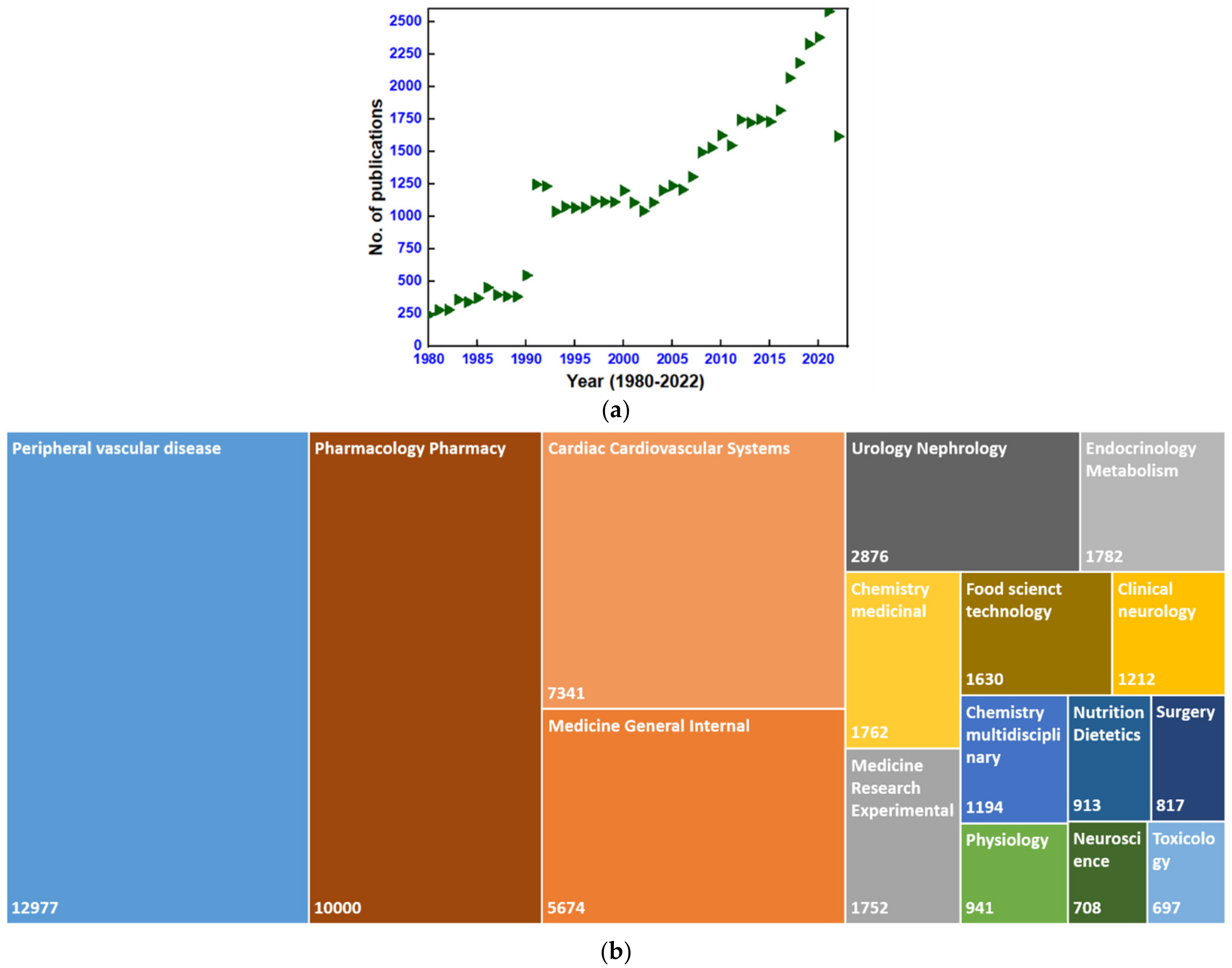
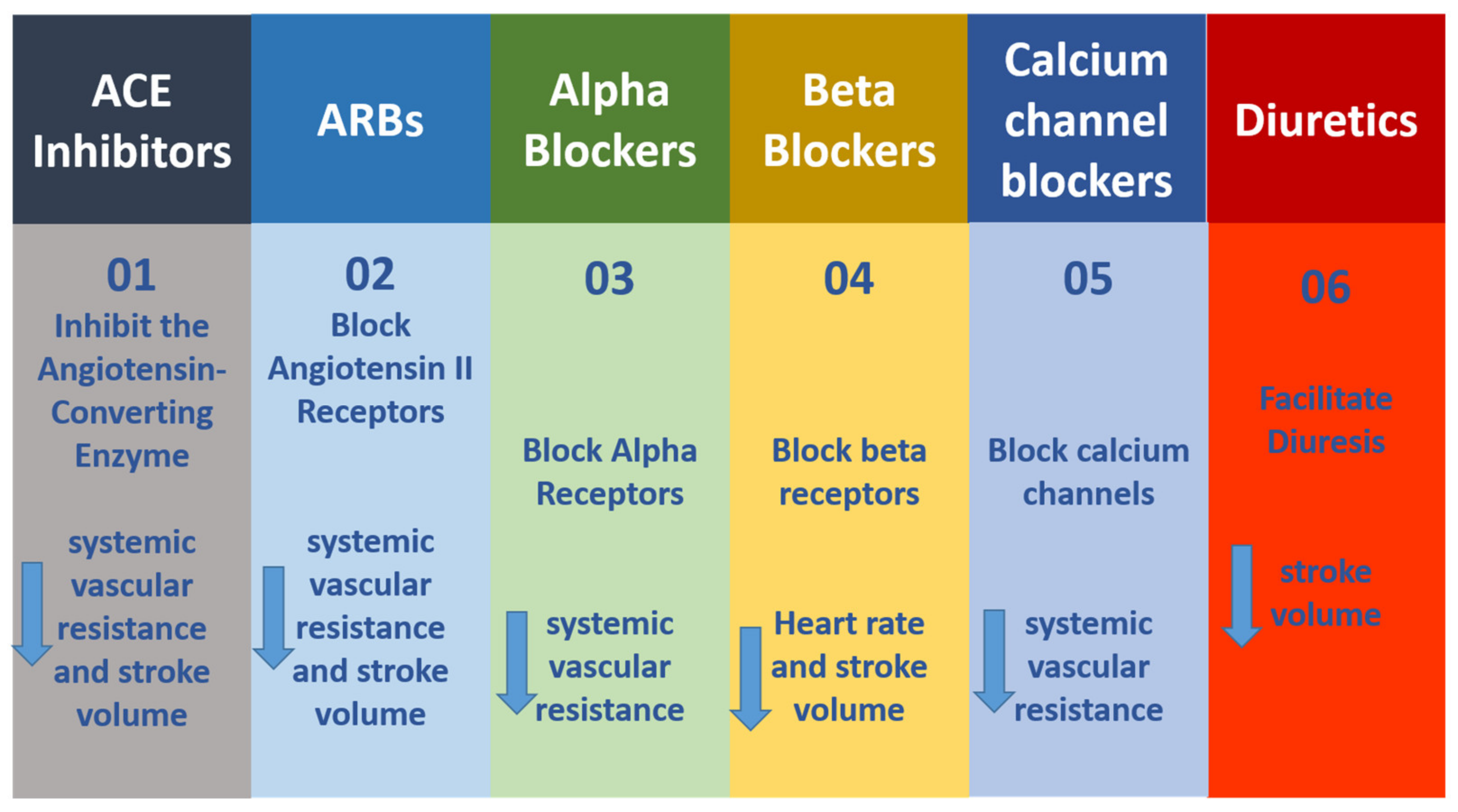




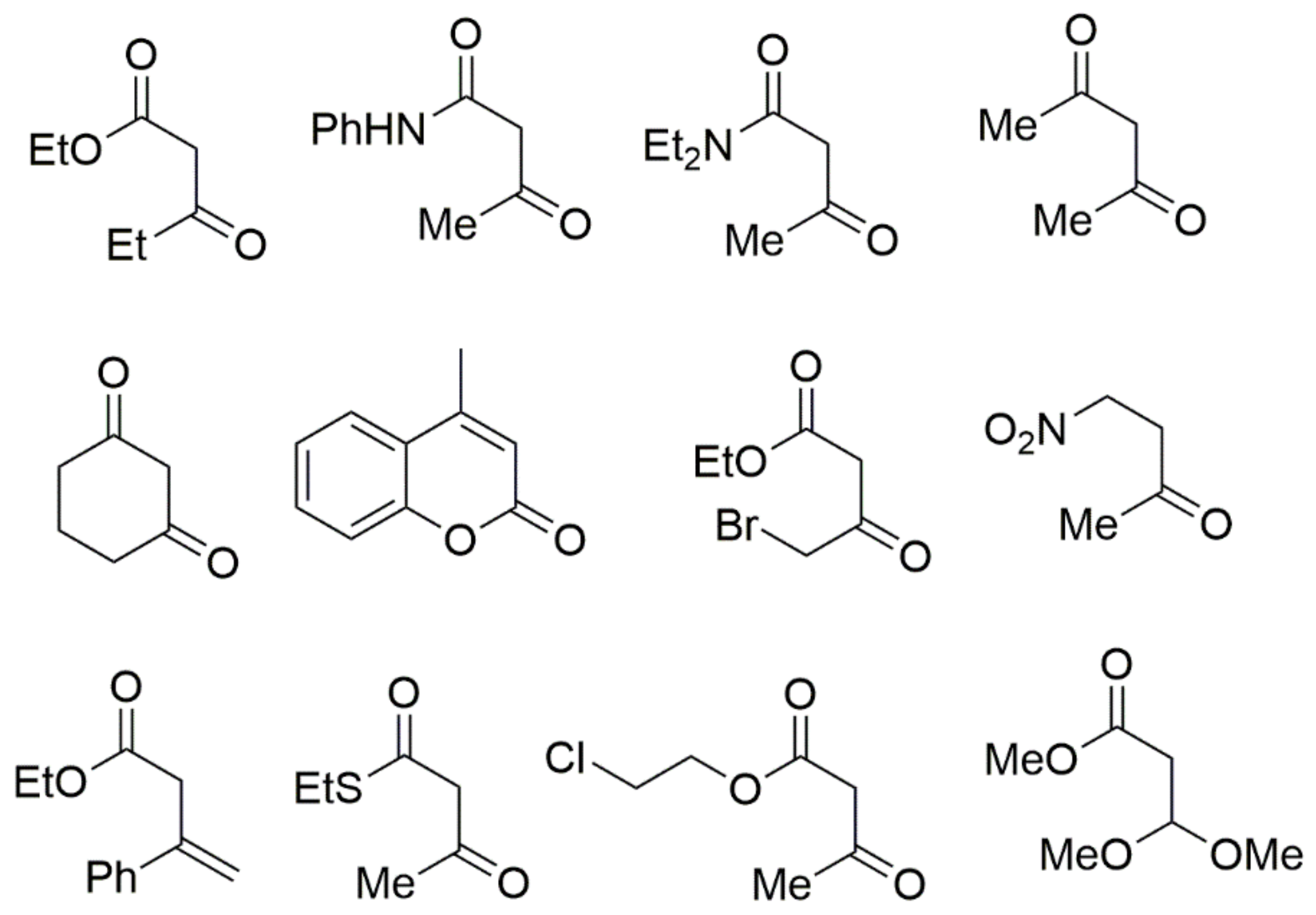


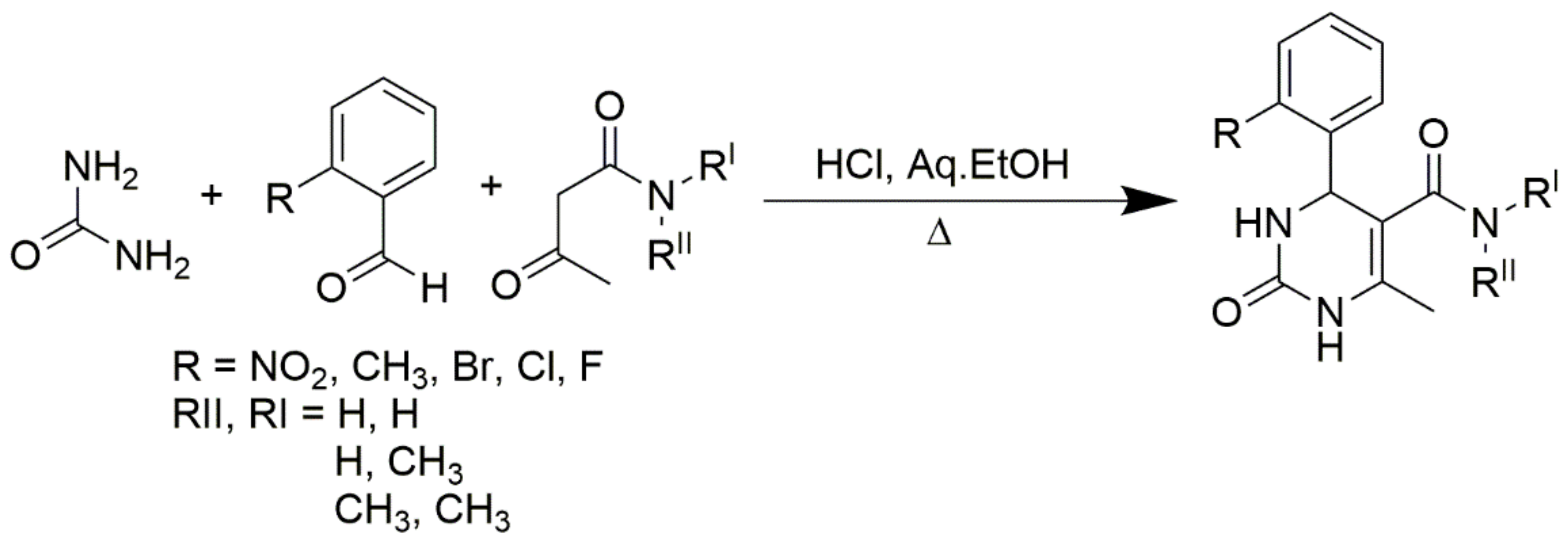

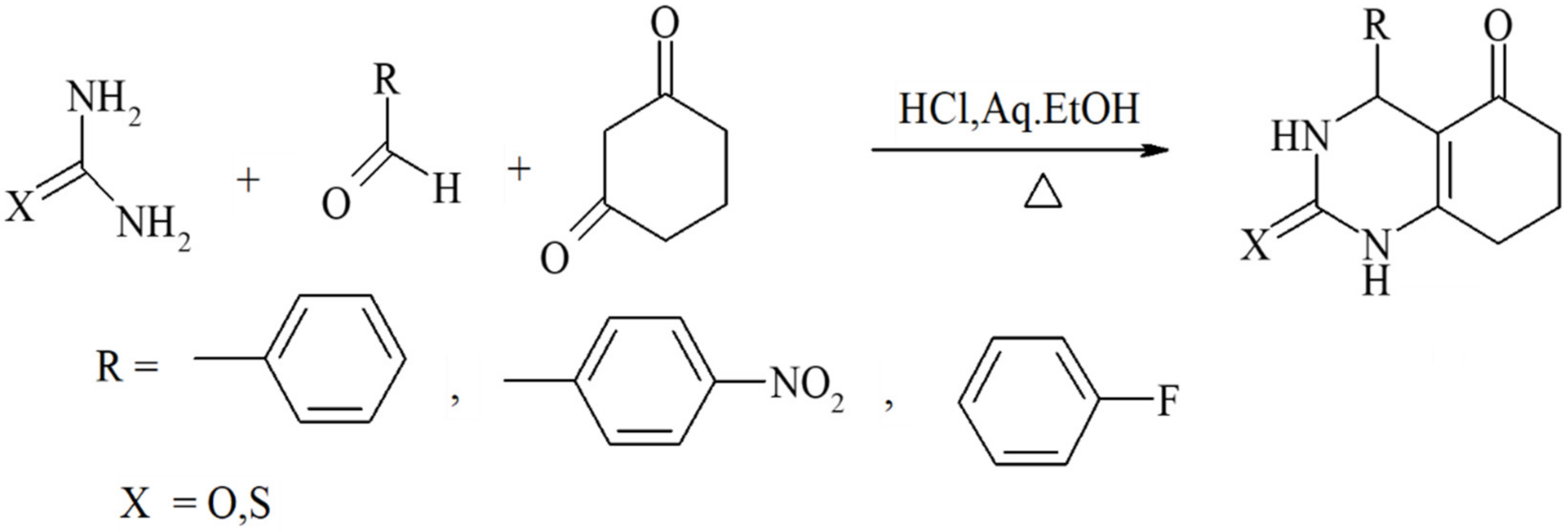
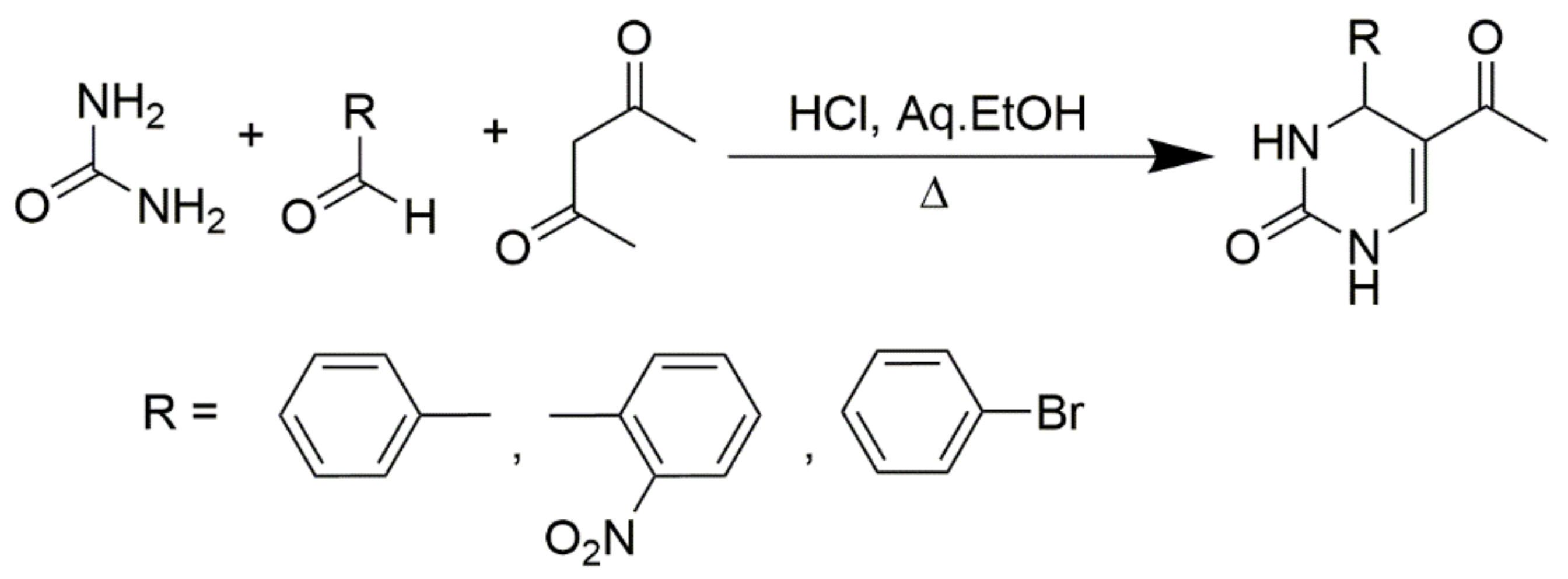
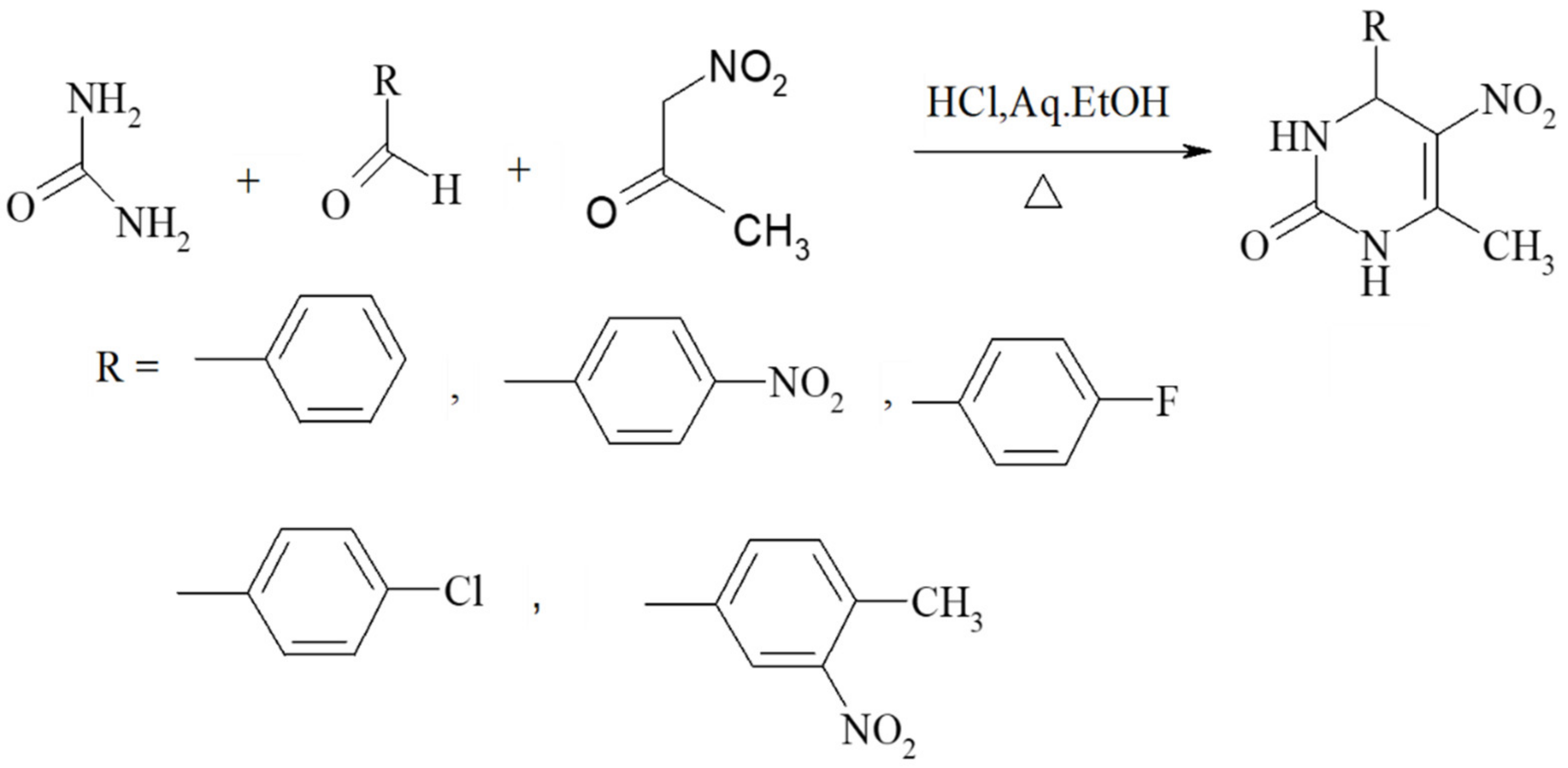
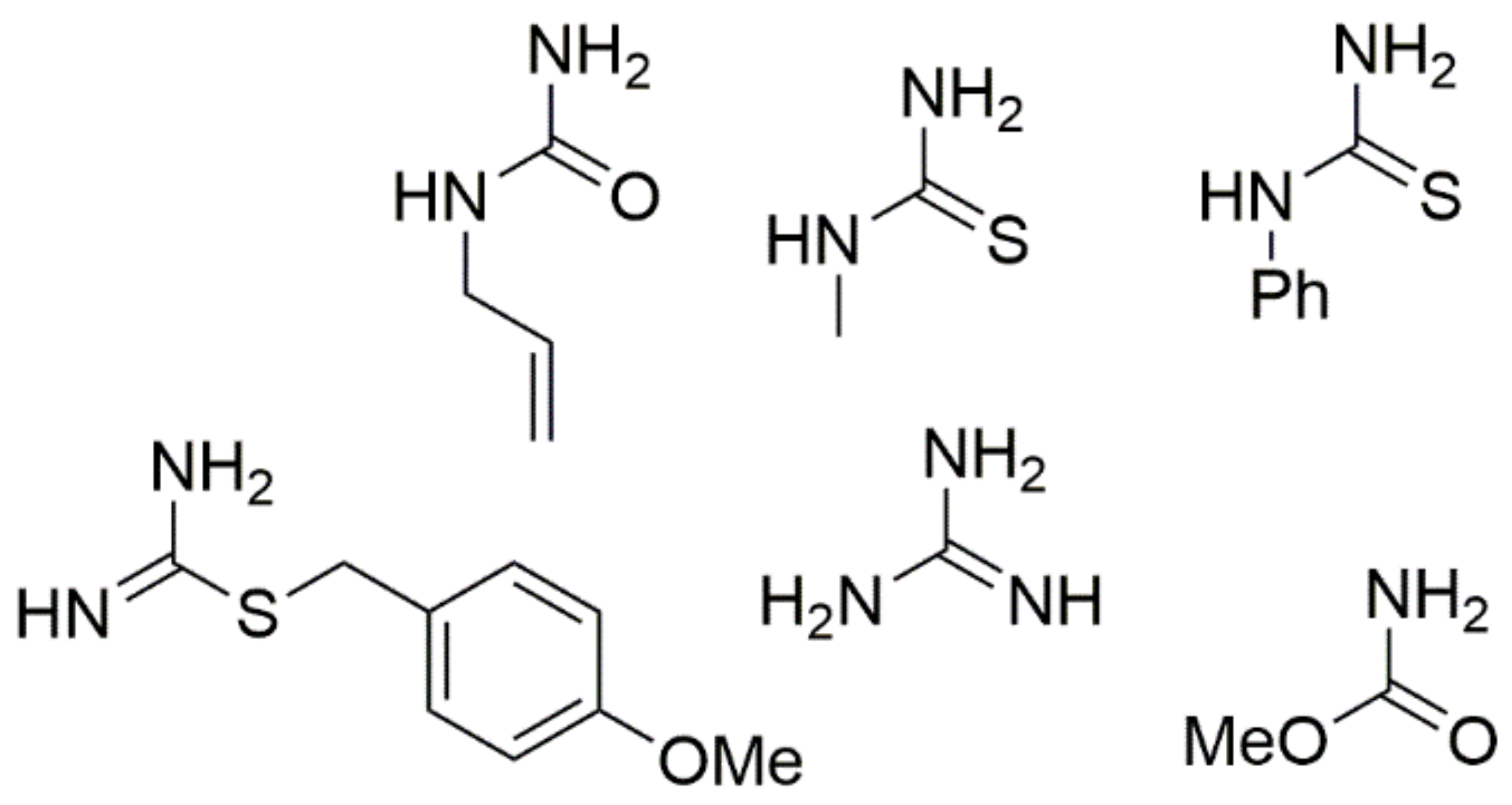
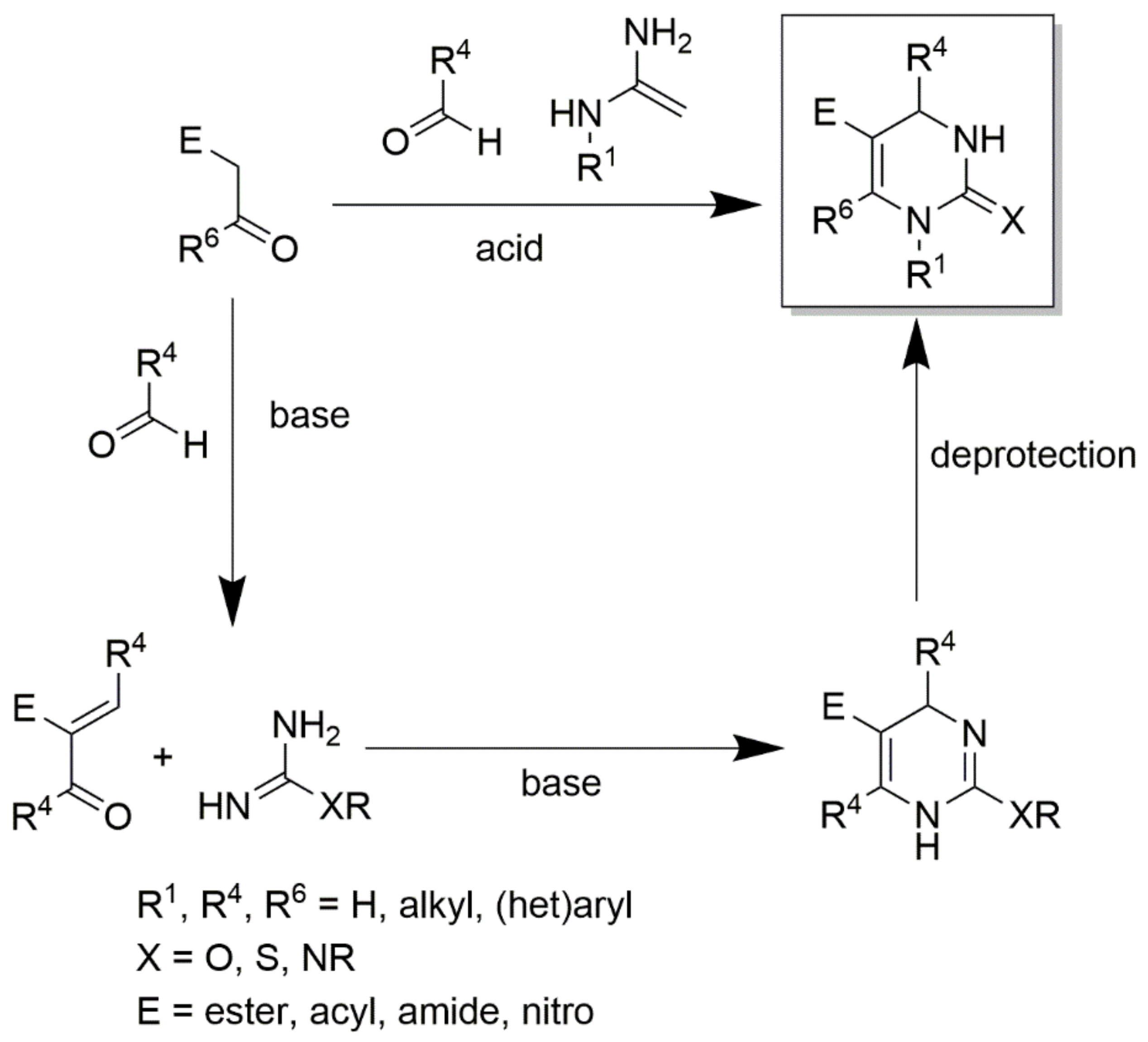
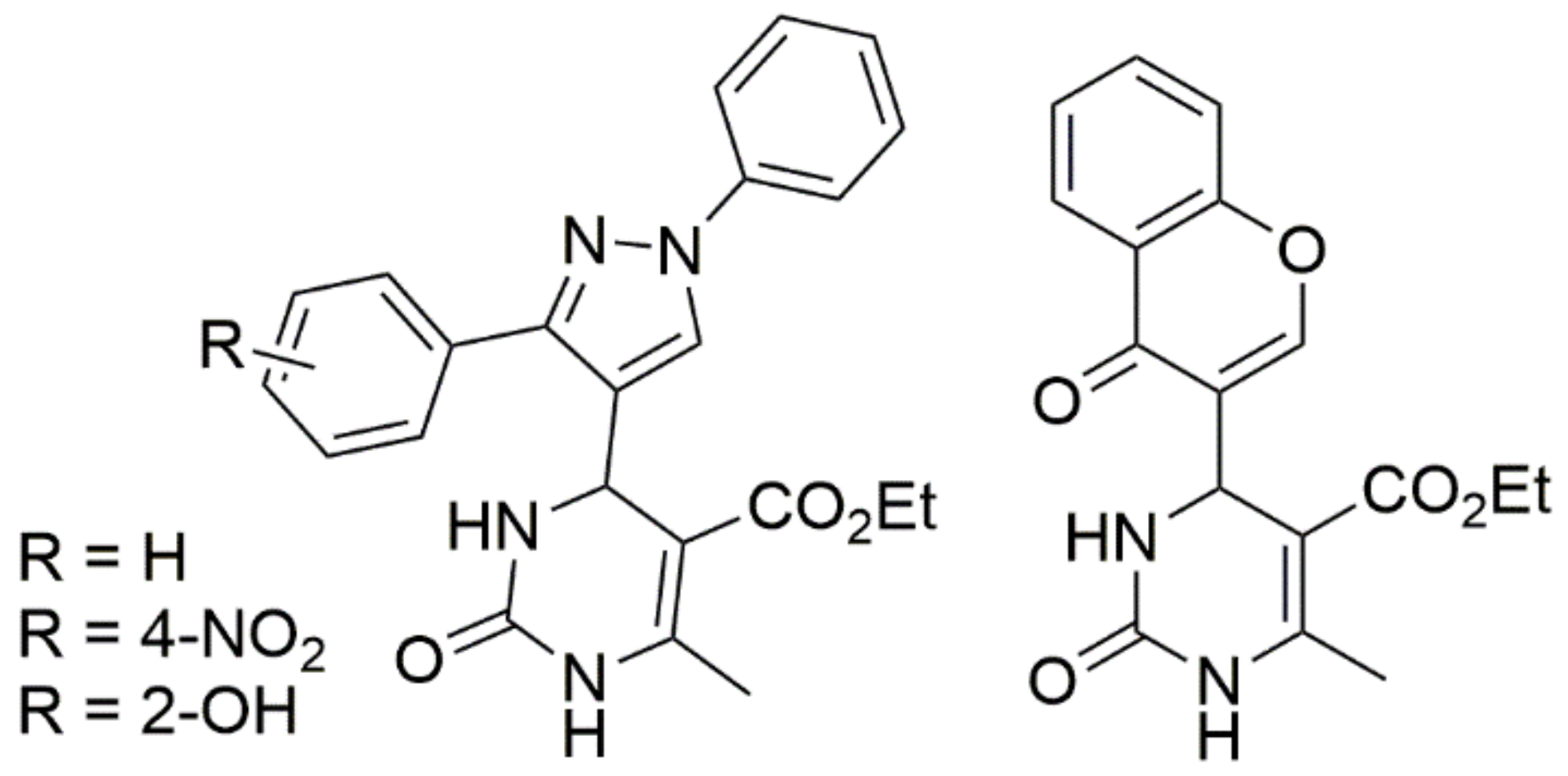
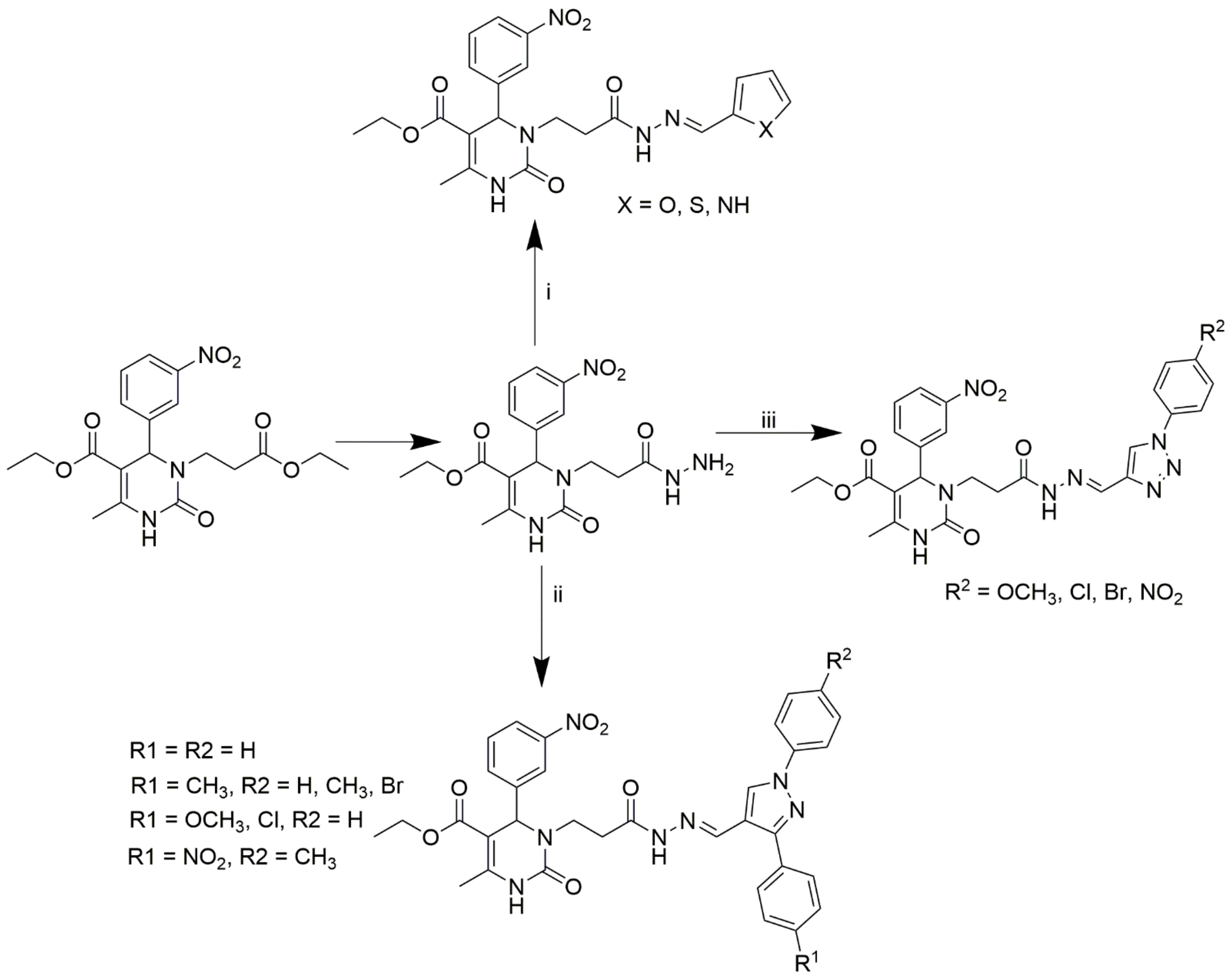
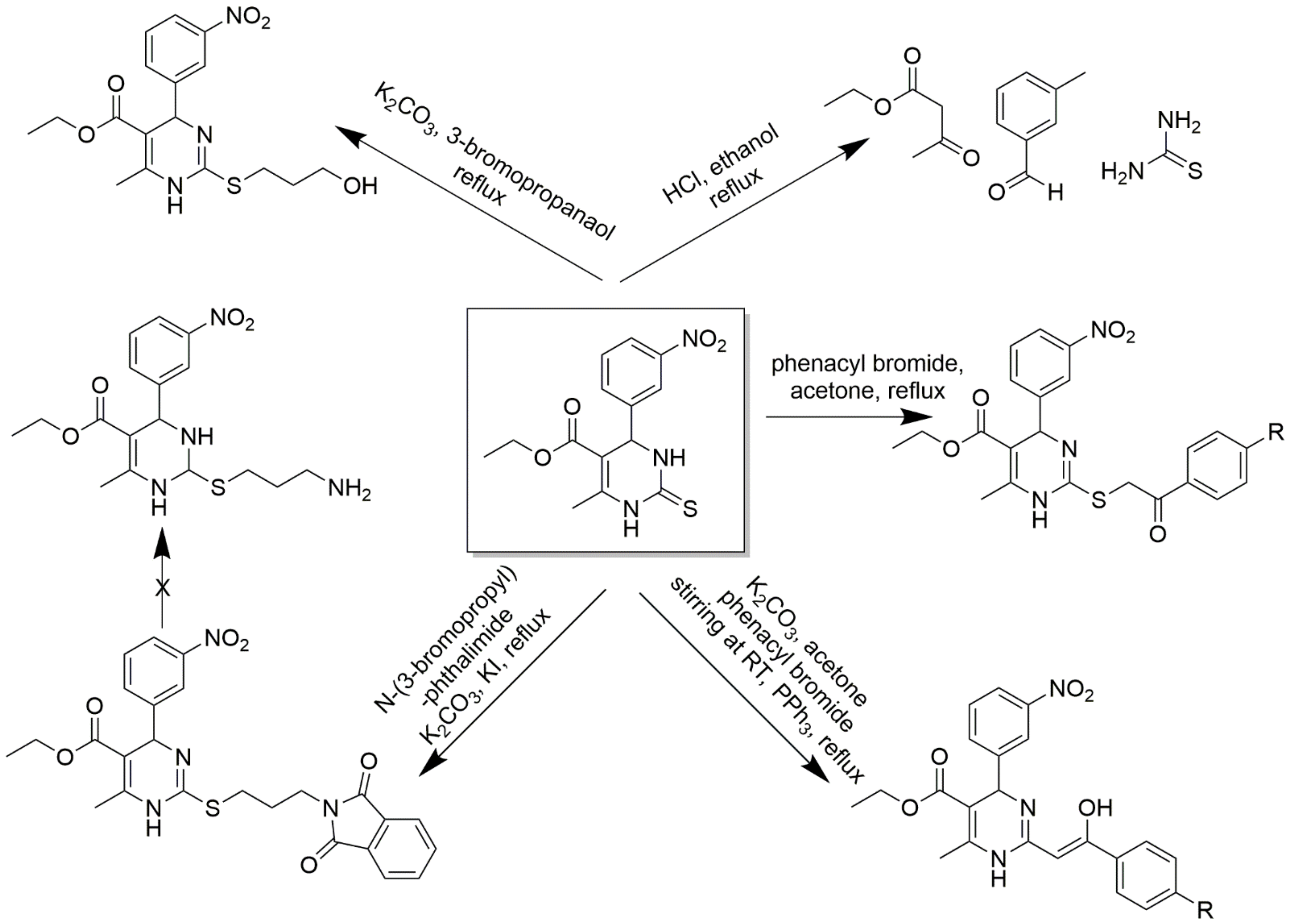
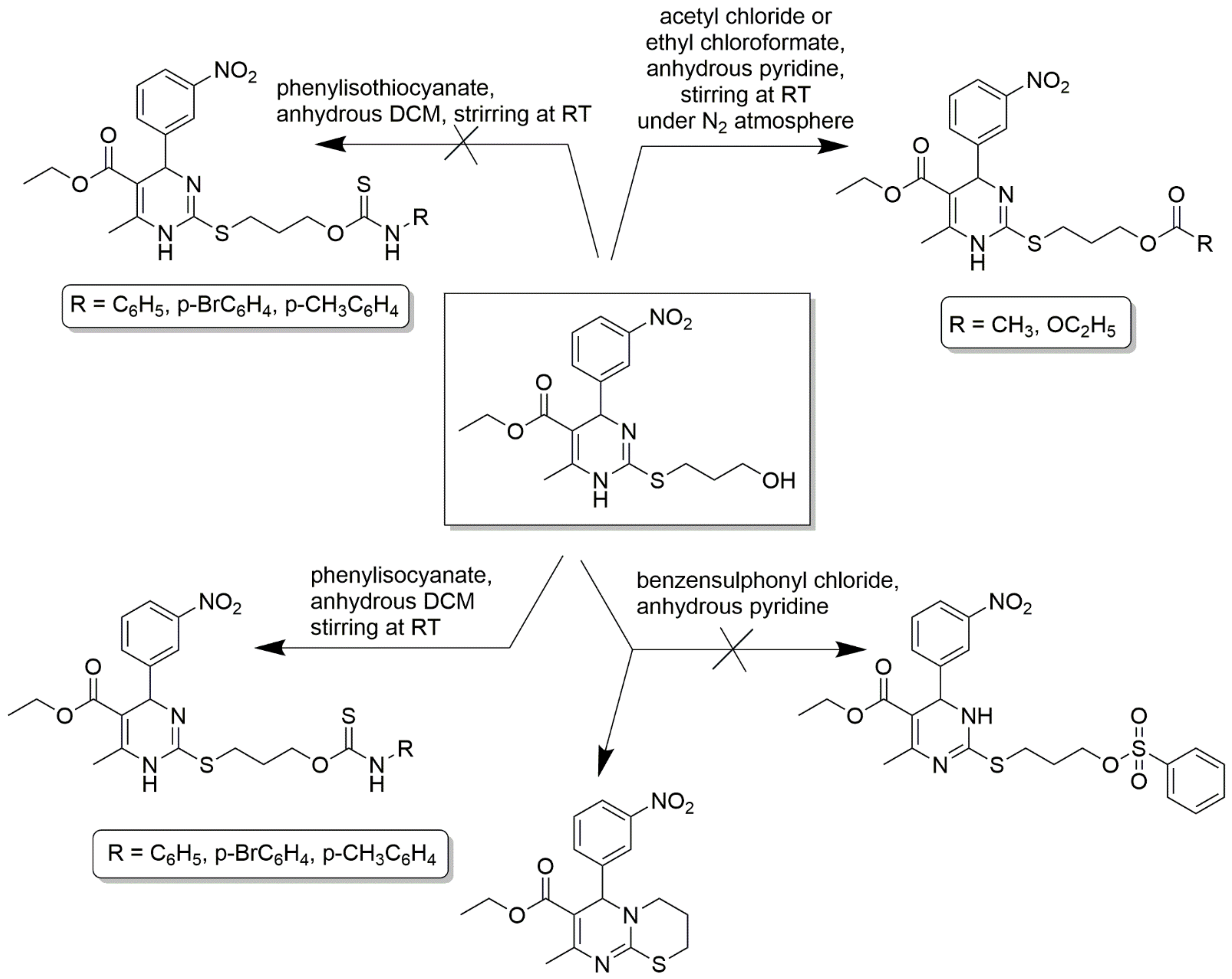
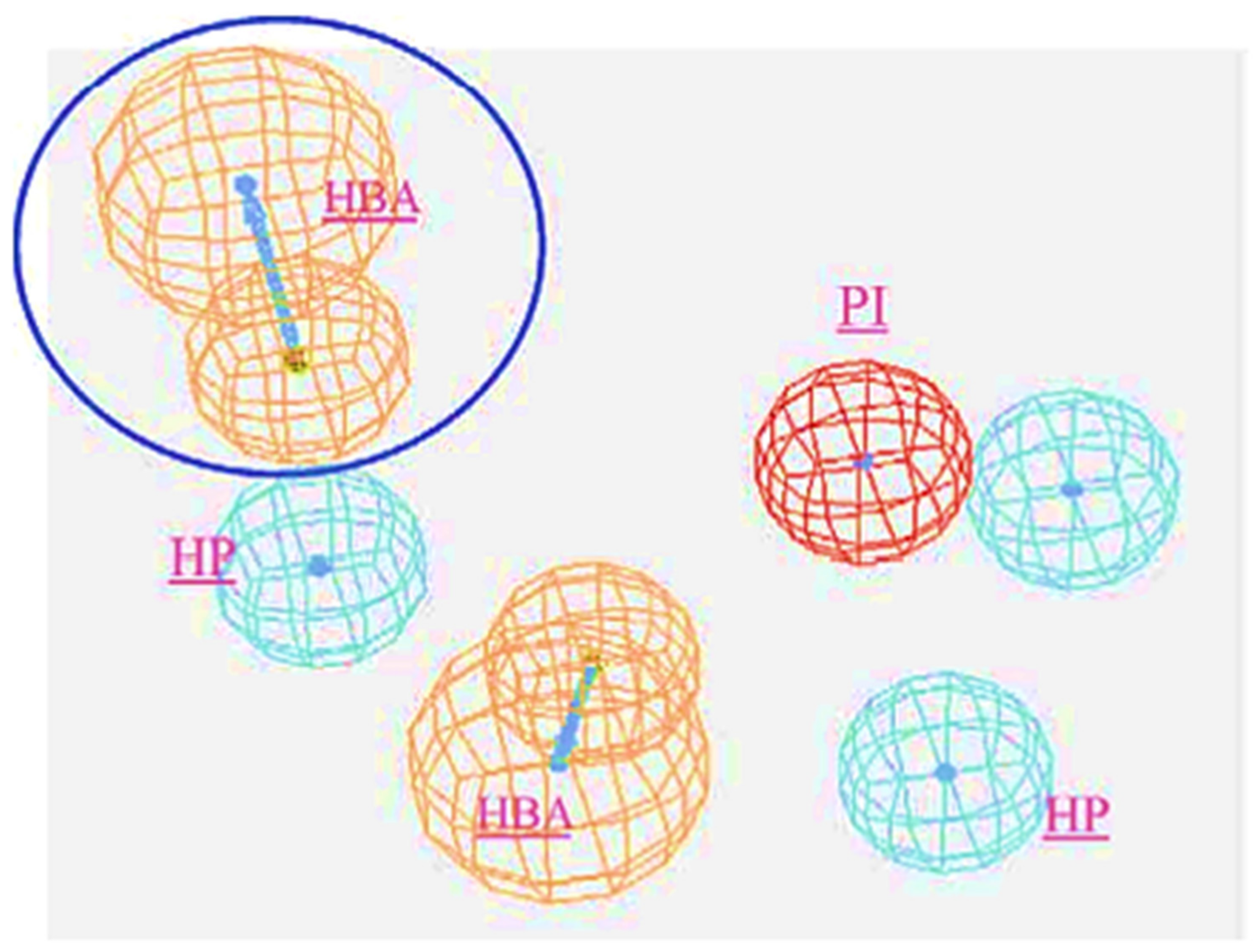
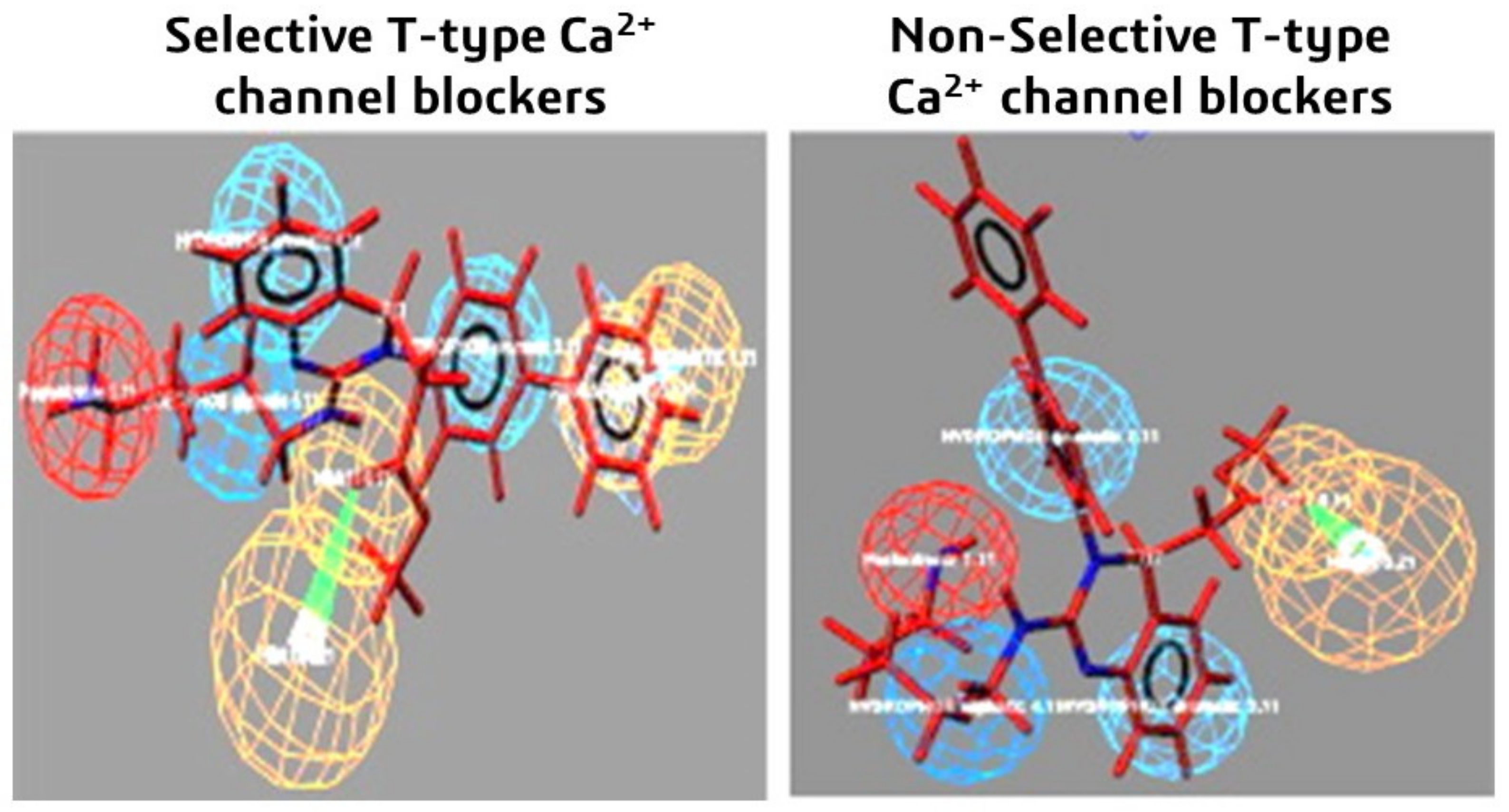
| Product | Substituents |
|---|---|
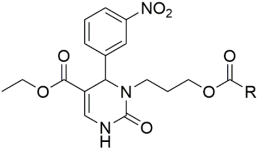 | R = CH3, OCH3, OCH2CH3 |
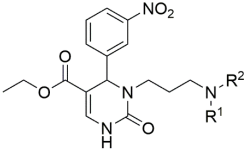 | R1 = CH2CH2CH3, CH2CH2OCH3, CH3, H R2 = CH2CH2CH3, CH2CH2OCH3, CH2C6H5, CH2CH(C6H5)2 |
 | R = C6H5, pCH3C6H4, pBrC6H4 |
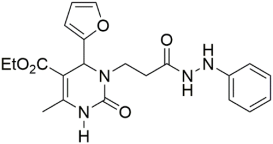 | R1 = H, R2 =C6H5, pNO2C6H4 R1 = R2 = C6H5 |
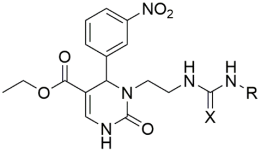 | X = O, R = C6H5, pCH3C6H4 X = S, R = CH2CH=CH2, pNO2C6H4, CH(C6H5)2 |
 | R = CH2C6H5, CH2COC6H5 |
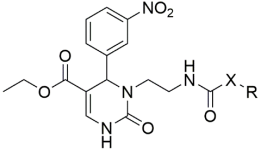 | X = O, R = CH3, C2H5, C(CH3)3, CH2C≡CH X = S, R = C6H5 |
| Product | Substituents |
|---|---|
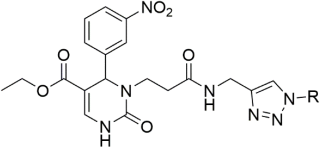 | R = CH2C6H5, CH2COC6H5 |
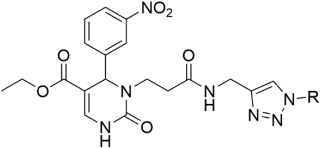 | R1 = CH3, CH2C6H5, CH2CH(C6H5)2, CH2CCH, CH2COOC(CH3)3, R2 = H R1 = CH2C6H5, R2 = CH3 R1 = R2 = CH2CH3 R1 = R2 = CH2CH2CH3 R1 = R2 = CH2CH2OCH3 |
 | |||||
|---|---|---|---|---|---|
| R1 | R2 | R3 | R4 | X | Yield (%) |
| H | H | Bn | Me | O | 62 |
| H | H | Bn | Ph | O | 17 |
| Me | H | Bn | Me | O | 28 |
| H | 4-Me | Bn | Me | O | 43 |
| Me | 3-NO2 | Allyl | Me | O | 35 |
| H | H | Allyl | Me | S | 46 |
| H | 4-Cl | Allyl | Me | O | 74 |
| H | 4-Br | Allyl | Me | O | 48 |
| H | 3-NO2 | Allyl | Me | S | 61 |
| H | 4-Me | Allyl | Me | S | 67 |
| H | 2-Cl | Allyl | Me | S | 37 |
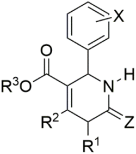 | X | Z | R1 | R2 | R3 | Yield (%) |
| H | O | H | Me | Et | 85 | |
| 3-NO2 | O | H | Me | Et | 93 | |
| 2-Cl | O | H | Me | Et | 95 | |
| 2-CF3 | O | H | Me | Et | 76 | |
| 2,3-(Cl)2 | O | H | Me | Et | 91 | |
| 3,4-(F)2 | O | H | Me | Et | 87 | |
| 2-Me | O | H | Me | Me | 86 | |
| 4-NO2 | O | H | Me | Me | 86 | |
| 3-NO2 | O | H | Me | i-Pr | 94 | |
| H | O | H | Me | t-Bu | 81 | |
| 3,4-(F)2 | O | H | Et | Me | 65 | |
| H | O | Me | Me | Et | 89 | |
| H | S | H | Me | Et | 82 | |
| 3-NO2 | S | H | Me | Et | 71 | |
| H | S | Me | Me | Et | 78 |
| Aldehyde | Product | Yield (%) | Irrd. Time (min) |
|---|---|---|---|
 | 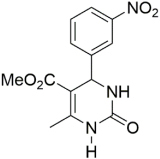 | 66 | 1.0 |
| 68 | 2.6 | ||
 |  | 48 | 1.0 |
| 66 | 0.7 | ||
 | 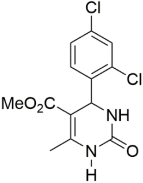 | 30 | 1.0 |
| 51 | 1.3 | ||
 | 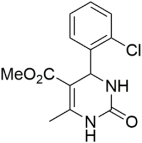 | 40 | 5.7 |
 | 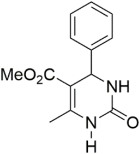 | ||
 |  | ||
 | 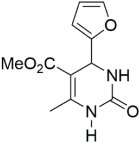 |
Disclaimer/Publisher’s Note: The statements, opinions and data contained in all publications are solely those of the individual author(s) and contributor(s) and not of MDPI and/or the editor(s). MDPI and/or the editor(s) disclaim responsibility for any injury to people or property resulting from any ideas, methods, instructions or products referred to in the content. |
© 2023 by the authors. Licensee MDPI, Basel, Switzerland. This article is an open access article distributed under the terms and conditions of the Creative Commons Attribution (CC BY) license (https://creativecommons.org/licenses/by/4.0/).
Share and Cite
Zohny, Y.M.; Awad, S.M.; Rabie, M.A.; Al-Saidan, O.A. Synthesis of Dihydropyrimidines: Isosteres of Nifedipine and Evaluation of Their Calcium Channel Blocking Efficiency. Molecules 2023, 28, 784. https://doi.org/10.3390/molecules28020784
Zohny YM, Awad SM, Rabie MA, Al-Saidan OA. Synthesis of Dihydropyrimidines: Isosteres of Nifedipine and Evaluation of Their Calcium Channel Blocking Efficiency. Molecules. 2023; 28(2):784. https://doi.org/10.3390/molecules28020784
Chicago/Turabian StyleZohny, Yasser M., Samir M. Awad, Maha A. Rabie, and Omar A. Al-Saidan. 2023. "Synthesis of Dihydropyrimidines: Isosteres of Nifedipine and Evaluation of Their Calcium Channel Blocking Efficiency" Molecules 28, no. 2: 784. https://doi.org/10.3390/molecules28020784
APA StyleZohny, Y. M., Awad, S. M., Rabie, M. A., & Al-Saidan, O. A. (2023). Synthesis of Dihydropyrimidines: Isosteres of Nifedipine and Evaluation of Their Calcium Channel Blocking Efficiency. Molecules, 28(2), 784. https://doi.org/10.3390/molecules28020784





